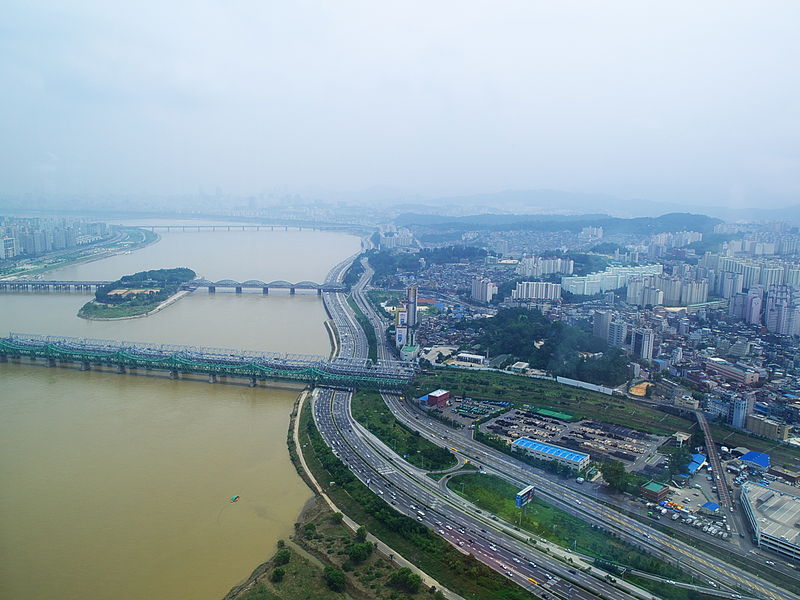I traveled to China in September, quite possibly one of the best times of the year to visit in terms of weather. The air quality in both Beijing and Shanghai was actually pleasant and was very different from how it seemed during my previous visits as well as from the typical accounts one usually hears of the notorious smog in China’s major cities. It made me think about growing up during the industrialization of my home country, South Korea.
In the 1980s, I lived in an industrialized city close to Seoul. The city then was filled with factories and its harbor was dirty. In school, we had to boil the tap water before we could drink it. Sometimes, during outdoor activity, students would walk around to pick garbage in neighborhood clean-up efforts. The fast economic development and rapidly growing population of Seoul in the late 1980s also polluted the Han River—hardly the place for family picnics. Fast forward a couple of decades, however, and now it is much cleaner and frequently enjoyed as a good spot for leisure and sports.
While Korea can still do more to improve its environment, the country has done much to correct the adverse impacts of its earlier industrialization. Since systematic waste water collection and treatment systems were installed in the Han River, Korea has invested approximately 1.5% to 1.8% of its GDP each year in pollution abatement. Though overall spending in this area decreased just after the 1997 Asian Financial Crisis, it has continued to grow each year since then amid more stringent environmental rules.
Spending for environmental control in Korea is well balanced between the public and business sectors. Corporations do their share to help protect the environment and public awareness is high. In fact, many Seoul citizens seem to have the correct mindset, placing greater importance on their own actions and habits for environmental protection than relying on just infrastructure investment spending.
As a much bigger country, China’s efforts to restore its environmental health could take much longer. One of its biggest challenges may be to encourage local governments to balance economic growth with environmental health. There are many statistics to measure the costs of China’s environmental pollution to its economy. By some estimates, it could possibly cost tens of billions of dollars to install the basic infrastructure to combat China’s pollution.
But judging from Korea’s experience, environmental improvements for China should be about more than just infrastructure investment. Environmental infrastructure requires every citizen’s efforts as well as the long-term commitment of both the government and private sector. Exactly how the value of environmental improvements are measured in monetary terms concerns entrepreneurs as they develop business models accordingly. However, no doubt such improvements should benefit us in countless ways and provide for many positive opportunities going forward.
In-Bok Song, Senior Research Analyst at Matthews Asia
The views and information discussed represent opinion and an assessment of market conditions at a specific point in time that are subject to change. It should not be relied upon as a recommendation to buy and sell particular securities or markets in general. The subject matter contained herein has been derived from several sources believed to be reliable and accurate at the time of compilation. Matthews International Capital Management, LLC does not accept any liability for losses either direct or consequential caused by the use of this information. Investing in international and emerging markets may involve additional risks, such as social and political instability, market illiquidity, exchange-rate fluctuations, a high level of volatility and limited regulation. In addition, single-country funds may be subject to a higher degree of market risk than diversified funds because of concentration in a specific geographic location. Investing in small- and mid-size companies is more risky than investing in large companies, as they may be more volatile and less liquid than large companies. This document has not been reviewed or approved by any regulatory body.


